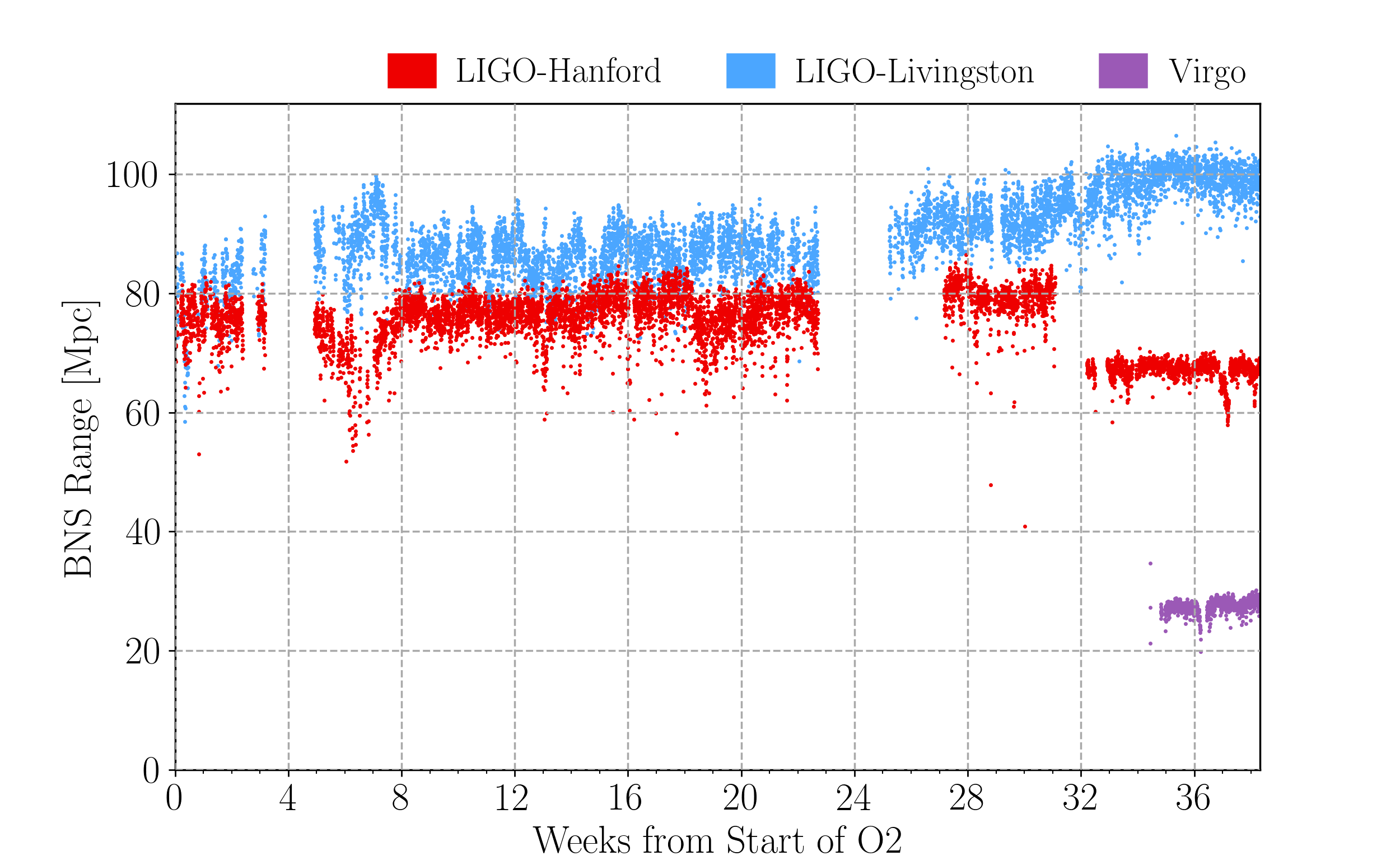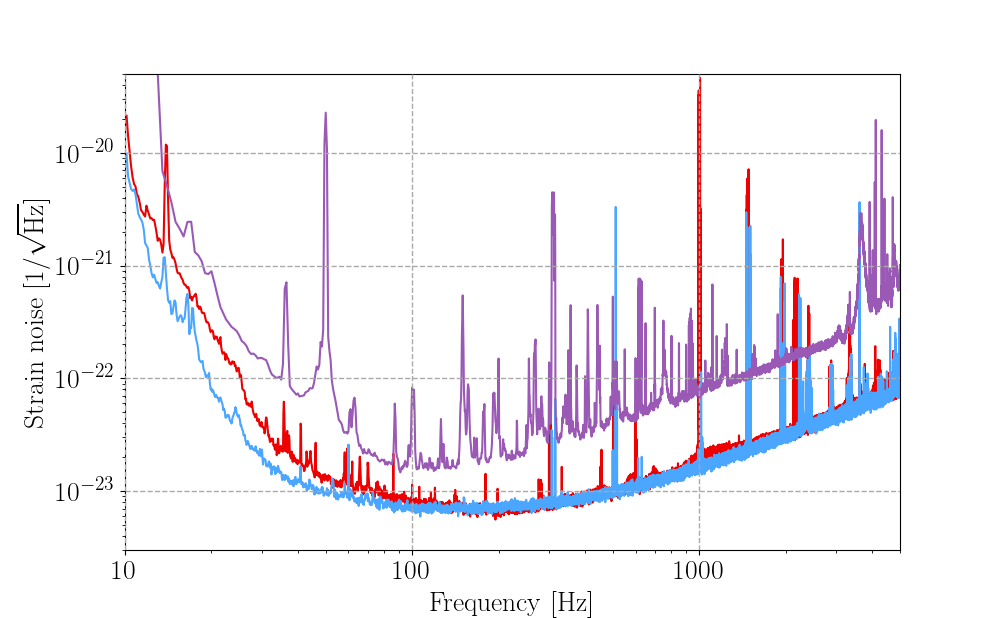The O2 Data Release
Run Overview
- O2 dates: 2016 Nov 30th 16:00 UTC (GPS 1164556817) to 2017 Aug 25th 22:00 UTC (GPS 1187733618)
- Data are available from three detectors, H1, L1 and V1 (Virgo data began Aug 1st, 2017)
- For Virgo, data around the event GW170729 have also been released and they can be found here
- The O2 data set is available at the original 16 KHz and the downsampled 4KHz sample rates.
- This is the first observing run that includes both Advanced LIGO and Advanced Virgo data.
Get O2 Data
- Strain Data: 4 KHz | 16 KHz
- Md5 checksums for 4KHz data: All 4KHz HDF5 files | All 4KHz GWF files
- Md5 checksums for 16KHz data: All 16KHz HDF5 files | All 16KHz GWF files
- Segments: Data Available | Data quality and injections
- Detections: GWTC-1
- Large downloads: CernVM-FS
GWF Channel Names
See the technical details page for the channel names used in the O2 4KHZ and 16KHz GWF files (ending with extension .gwf). These are new channel names that are different than those used in S5, S6 and O1 4KHz GWF files.
O2 Detector Status
Details about the status of LIGO and Virgo detectors in O2 can be found in the GWTC-1 Catalog paper or in this web page
Folded Data
O2 data are included in the O3 release of Folded Data for Stochastic Searches.
Astrophysical Results
O2 astrophysical results are tabulated in the GWTC-1 catalog, which describes 11 compact object mergers found in O1 and O2. An overview of compact binary coalescence results in O2 detections can be found in:
- GWTC-1: A Gravitational-Wave Transient Catalog of Compact Binary Mergers Observed by LIGO and Virgo during the First and Second Observing Runs LIGO DCC
- Parameter estimation sample release for GWTC-1, LIGO DCC
- Binary Black Hole Population Properties Inferred from the First and Second Observing Runs of Advanced LIGO and Advanced Virgo, LIGO DCC
For a full list of papers by the LSC and Virgo collaborations, see:
and for a list of discovery papers, see:
Data Quality Segments
A number of categories of data quality segments are available for the O2 data set. For example:
- The DATA segment list indicates times when data are publicly available.
- Times outside the CBC_CAT2 segment are associated with data quality problems.
For information on how to use data quality segments, please see the technical details page.
Hardware Injections
The O2 data set contains simulated astrophysical signals, known as hardware injections, used for testing and calibration. For an example, see the Find a Hardware Injection Tutorial. For complete documentation, see:
Instrumental Spectral Lines
A power spectral density of LIGO data typically shows a number of spectral lines. Many of these are associated with known instrumental resonances. The O2 instrumental spectral lines page gives an explanation, and catalog, of these instrumental lines.
Representative PSDs


- The above plots are reproduced from Figure 1 of the GWTC-1 paper
- Plots of daily sensitivity available on the archived detector status pages
Segments for Short Fourier Transforms
Segments used for O2 SFTs are in DCC T1900085
Technical Details
GWOSC 4KHz strain data have been repackaged and downsampled from 16384 Hz to 4096 Hz. Advanced LIGO and advanced Virgo data are not calibrated or valid below 10 Hz or above 5 kHz, and the data sampled at 4096 Hz are not valid above about 1700 Hz. In most searches for astrophysical sources, data below 20 Hz are not used because the noise is too high. More detailed information about the data set can be seen on the Technical Details page.
Background data for GW170608
Additional O2 data are available in the GW170608 background data set.
Acknowledge
To acknowledge the use of O2 data, see the Acknowledgement Page.
Data Set DOI: https://doi.org/10.7935/CA75-FM95
Revision History
- Dec 10, 2018: First Draft of Page
- February 27, 2019: First release
- May 31, 2019: Add link to GW170608 background data
- Dec 9, 2021: Add link to SFTs
- August 30, 2022: Added links to MD5 checksums for strain data
